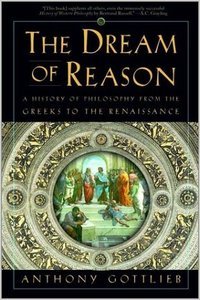It’s been a while since I posted something here at Critical Voter, primarily due to a new project I’m working on that I recently decided deserves its own web site (which you can find starting this week at www.degreeoffreedom.org).
Degree of Freedom actually grew out of that Massively Open Online Course (MOOC) in logic and argumentation that I mentioned the last time I posted here on the Critical Voter blog.
While taking that course (and scrutinizing its positives and negatives vs. other methods of learning, including traditional classroom courses), it dawned on me that I might not be giving MOOCs a fair shake, especially since they are likely to vary widely in terms of teacher and video production quality, as well as the scope and quality of course material not related to lectures (such as homework, reading and examinations).
And so I started looking around to see what other courses might be available to enroll in (at least to kick their tires). This led me into a month long evaluation of course offerings, followed by a second month of research into what educators were saying about this latest craze in high tech education.
Some fans of the phenomenon (including New York Times columnist Tom Friedman) see MOOCs as a revolutionary step forward in open education for a flat world that will eventually turn brick-and-mortar colleges into piles of rubble. (OK, maybe I’m exaggerating their enthusiasm a bit, since most MOOC advocates still refer to these classes as “experiments,” meaning they admit that the jury is still out on the results of such an experiment.)
On the other end of the spectrum, you’ve got critics who highlight some of the obvious shortcomings of courses taught to tens or hundreds of thousands of people simultaneously (lack of connection between professor and student, limited ways of evaluating learning, etc.), and others who have tried to run the numbers and see just how many of the jillions of people enrolled in these courses are actually doing anything.
Like boosters, critics can sometimes go over the top (my favorite being this Marxist analysis which determined that MOOCs were the new opiate of the masses). But in all my reading, it dawned on me that all of these reviews and critiques were based on extremely limited information (at most, statistics or anecdotes related to taking or teaching one particular course). What seemed to be lacking was the experience of someone taking ALL of the courses needed to learn the equivalent of a full-blown degree program (ideally someone with some background in the various elements that make up a class, including curriculum, lectures and assessments).
And then those dreadful words bubbled to the top of my consciousness: Why not me? After all, Critical Voter is a wrapped project (even though I’m still hoping to use some new tools to create an e-learning track on this site), and I’m interested in applying what I learned through that effort to a new activity. And while I’ve toyed with the idea of going back to school on and off for years, it dawned on me that what I really wanted was to study broadly in liberal arts (rather than specialize by getting an advanced degree in this or that subject).
And so I have begun the process of trying to pack four years of undergraduate classes into the twelve months of 2013 (and get this entire education entirely through free educational resources).
The Degree of Freedom blog will document observations about this experience, including analysis of what’s working and what still needs worth throughout the wider MOOC enterprise.
I’ll also be publishing a weekly newsletter that tracks my progress through the One Year BA program, as well as providing reviews of individual courses and links for further reading on the subject.
So please stop by, subscribe to the newsletter, and follow along. It promises to be an interesting twelve months.
Oh, and by the way… I’m going to major in philosophy.
Wish me luck!





